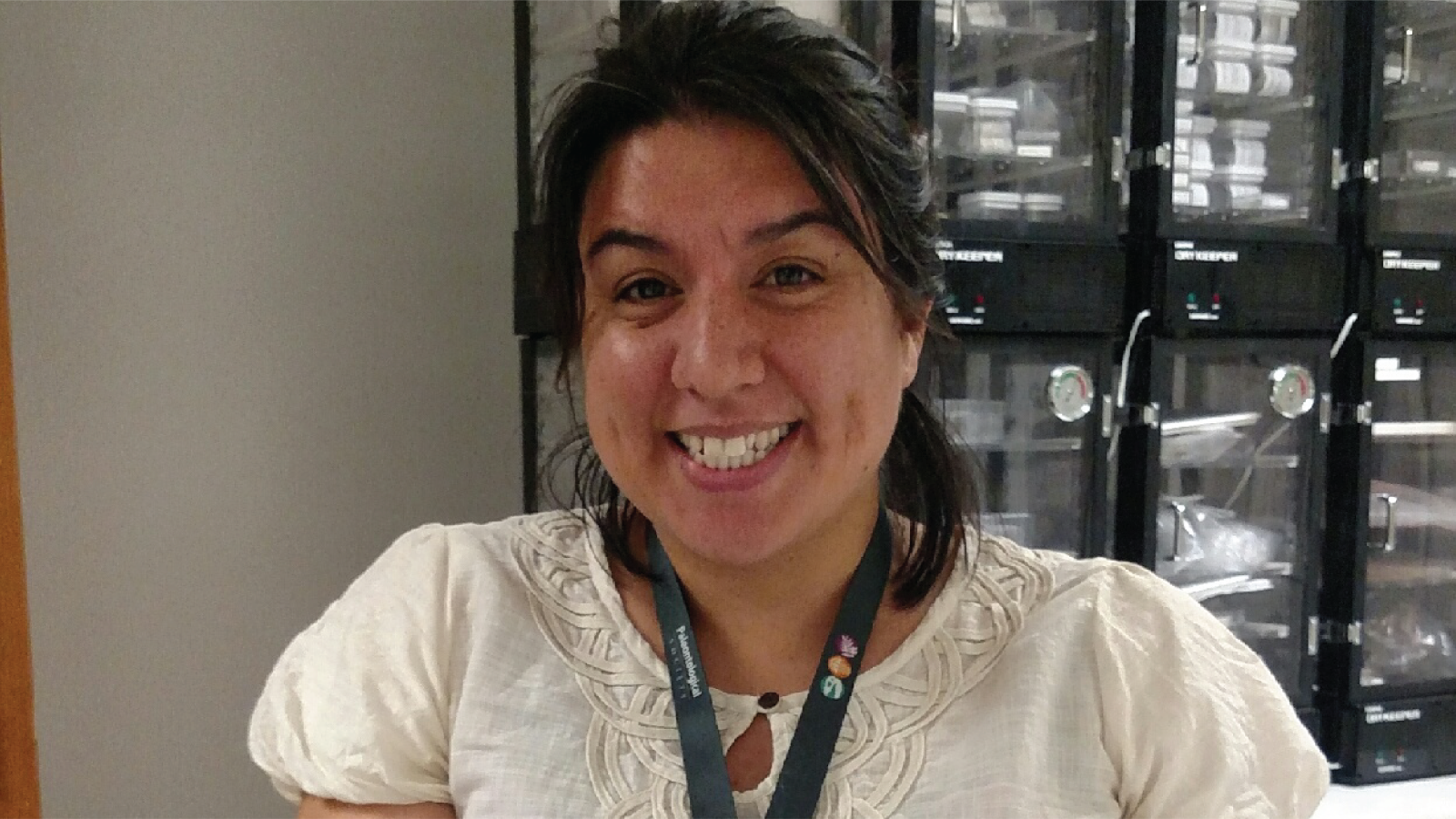Kathy Ann Hollis (Bremar) earned her MS in Geology from SES in 2005 and is now the Paleobiology Collections Manager at the Smithsonian National Museum of Natural History.
"Being a student opens doors to hands on and real world experience, which can be more valuable than what you learn in a classroom. Seek out possible mentors in instructors who are curious about the world in the way you are. Stay curious!"
Where has your degree taken you?
I was halfway through my MS, 22 years old, and I realized quite jarringly that I had not put any thought into what I was going to do after grad school. I loved paleontology, but a PhD was not form me. I knew I was much stronger at organizing things than researching things. I always loved museums and collections, and I started to learn about the profession of museum collections management. My MS advisor (Dr. Bill Ausich) connected me with then Paelobiology Collections Manager at the Smithsonian NMNH. I volunteered with her and did a summer project at the museum, which helped me decide to pursue a career in collections management. I applied for Museum Studies graduate programs and chose the University of Colorado Boulder. I graduated in 2008 with more hands on experience, worked at the CU Natural History Museum for two years, then was hired as part of the collections management team at NMNH in 2010. I’m now the Paleo Collections Manager and I lead the team that cares for the National Fossil Collection, the largest fossil collections in the world. My work involves balancing accessibility and accountability for these fossils, which are held in public trust. I am passionate about getting the scientific data about what fossil organisms lived when and where out of collection drawers and making those data digitally accessible and searchable online.
How do you feel your experience, specifically as an SES/geology student at OSU, prepared you for your career or life in general?
My experience connected me to the professional paleo research community and taught me how this community works together to advance science. Museum research collections exist to be researched, and my job is to connect the specimens and data within collections to the researchers. My experience at OSU set my basis for understanding how to make collections accessible in the most relevant and meaningful way that serves scientific pursuit.
What is your favorite memory as a student?
Long hours of working and not working with fellow students in the Orton Sauna (a shared office and computer lab in the ground floor of Orton, which was at one time known for being as hot as a sauna. I hope it’s still there!).
What advice do you have for current and future students?
Being a student opens doors to hands on and real world experience, which can be more valuable than what you learn in a classroom. Seek out possible mentors in instructors who are curious about the world in the way you are. Stay curious!

